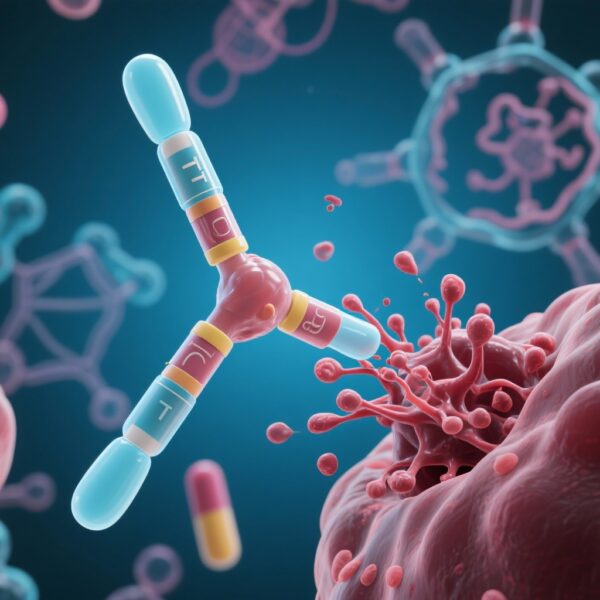Highlight
- Measurable residual disease (MRD) monitoring by RT-qPCR detects persistent leukemic cells in pediatric acute myeloid leukemia (AML) patients with KMT2A::MLLT10 fusion post-chemotherapy.
- MRD positivity after the second treatment course is associated with significantly poorer overall survival, event-free survival, and increased relapse incidence.
- Patients in complete morphologic remission but who remain MRD positive represent a high-risk subgroup warranting intensive clinical attention.
- Customized RT-qPCR assays based on RNA sequencing enable precise and sensitive disease monitoring in this genetically defined AML subtype.
Study Background
Pediatric acute myeloid leukemia (AML) is a heterogeneous hematologic malignancy with variable prognosis depending on cytogenetic and molecular abnormalities. Among KMT2A gene rearrangements, the KMT2A::MLLT10 fusion accounts for approximately 10%-15% of these cases and is generally associated with a poor outcome. Despite intensification of chemotherapy regimens, relapse rates remain high for this subgroup.
Measurable residual disease (MRD) — the detection of residual leukemic cells below morphological thresholds — has emerged as a crucial prognostic tool across various leukemias. Reverse transcription quantitative polymerase chain reaction (RT-qPCR) enables highly sensitive detection of specific fusion transcripts indicative of residual leukemia cells. Although MRD monitoring has been incorporated into treatment algorithms for pediatric AML more broadly, standardized protocols and robust prognostic data for KMT2A::MLLT10-expressing AML have been lacking. Addressing this gap can refine risk stratification and therapeutic decisions.
Study Design
This study involved 41 pediatric patients diagnosed with AML harboring the KMT2A::MLLT10 fusion, treated under the AML-BFM or AIEOP study protocols. RNA sequencing identified patient-specific breakpoint sequences in the fusion gene, facilitating design of tailored RT-qPCR assays for MRD detection.
Bone marrow samples were collected longitudinally during therapy, with a focus on after the second induction chemotherapy course. MRD status was evaluated quantitatively by RT-qPCR. Outcomes measured included overall survival (OS), event-free survival (EFS), and cumulative incidence of relapse (CIR).
Key Findings
Analysis demonstrated that patients who remained MRD positive after the second treatment cycle had significantly worse clinical outcomes:
– Overall Survival (OS): MRD-positive patients had a survival probability of 33.3% ± 19.2%, sharply contrasting with 80.6% ± 7.8% in MRD-negative patients (p = 0.032).
– Event-Free Survival (EFS): The EFS probability was 16.7% ± 15.2% for MRD-positive versus 76.9% ± 8.3% for MRD-negative patients (p = 0.003).
– Cumulative Incidence of Relapse (CIR): MRD-positive patients had an 83.3% ± 40.8% relapse incidence compared to 19.2% ± 40.2% in MRD-negative individuals (p = 0.001).
Importantly, these findings held true even in patients who were in complete morphologic remission, underscoring that morphological assessment alone underestimated residual disease burden.
Expert Commentary
This study fills a crucial clinical gap by establishing the prognostic significance of MRD monitoring in pediatric AML with KMT2A::MLLT10. The use of personalized RNA-sequencing informed RT-qPCR assays enhances assay sensitivity and specificity, making disease burden quantitation more precise.
While morphological remission remains a cornerstone of treatment assessment, molecular MRD evaluations identify patients at heightened relapse risk, advocating for integration into routine clinical protocols. However, standardization across laboratories and prospective validation in larger cohorts are needed before widespread clinical adoption.
From a biological standpoint, KMT2A::MLLT10 fusion drives aggressive leukemogenesis, which may explain the poor prognosis observed in MRD-positive patients despite intensive polychemotherapy. Future therapeutic strategies might consider novel targeted approaches or early hematopoietic stem cell transplantation in MRD-positive cases to improve outcomes.
Conclusion
MRD monitoring by RT-qPCR is a powerful prognostic tool in pediatric AML expressing KMT2A::MLLT10. Detection of residual leukemic cells after the second induction course identifies patients with poor overall and event-free survival despite achieving morphological remission. These data emphasize the need to incorporate molecular MRD assessment into standard therapeutic protocols for this high-risk AML subgroup to enable risk-adapted treatment intensification and improve long-term outcomes.
Funding and Clinical Trial Registration
This investigation was conducted within the framework of the AML-BFM study trials. Relevant clinical trial registrations include AML-BFM study 2004 (ClinicalTrials.gov Identifier: NCT00111345), AML-BFM registry 2012 and AML-BFM study 2012 (EudraCT 2013-000018-39), and AML-BFM registry 2017 (DRKS number: DRKS00013030).
Reference
Steidel E, Orhan E, Rasche M, Pigazzi M, Tregnago C, Hoffmeister LM, Walter C, Dworzak M, Mühlegger N, von Neuhoff N, Locatelli F, Reinhardt D, Schneider M. Prognostic Value of Molecular Genetic Measurable Residual Disease (MRD) Monitoring in Pediatric Acute Myeloid Leukemia Expressing KMT2A::MLLT10. Eur J Haematol. 2025 Nov;115(5):493-504. doi: 10.1111/ejh.70019. Epub 2025 Aug 13. PMID: 40803346; PMCID: PMC12505838.



